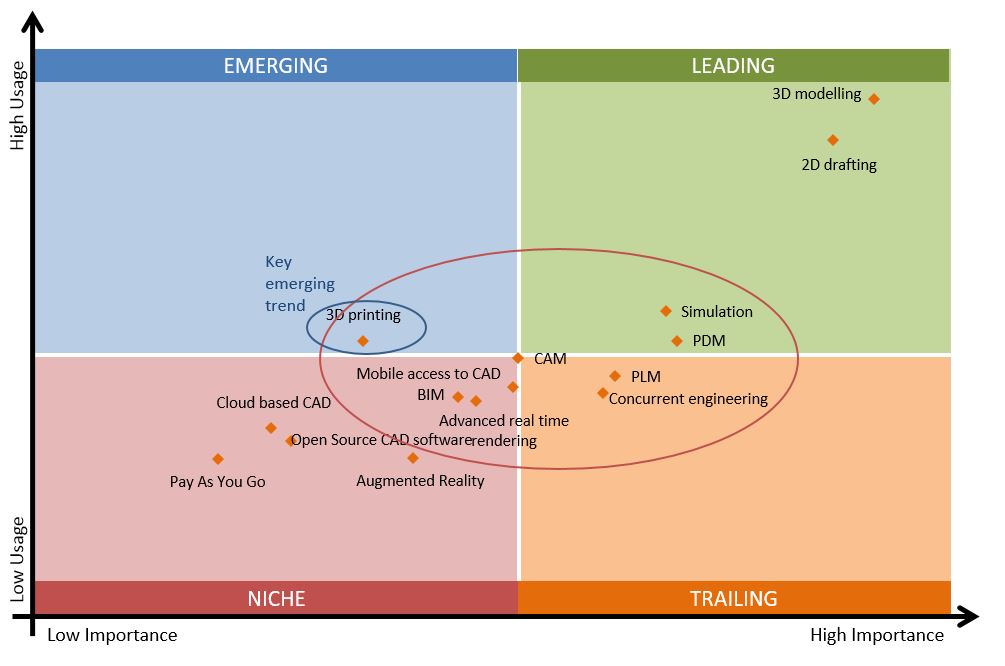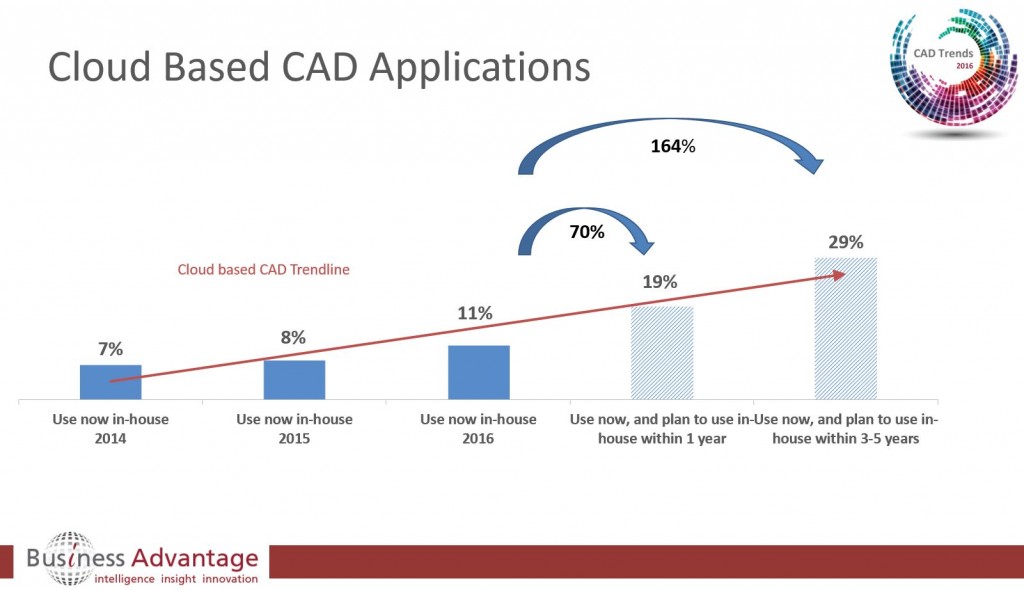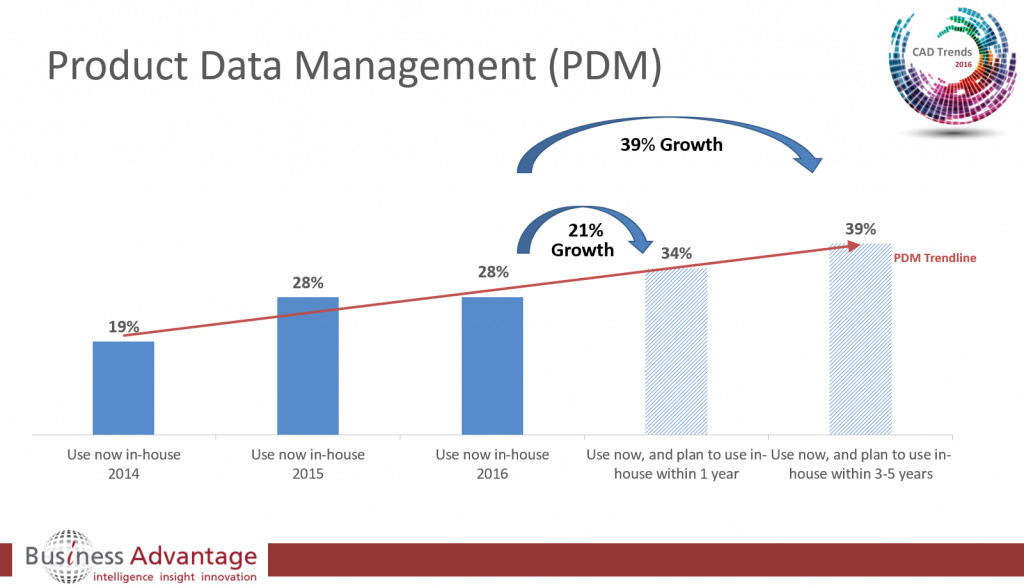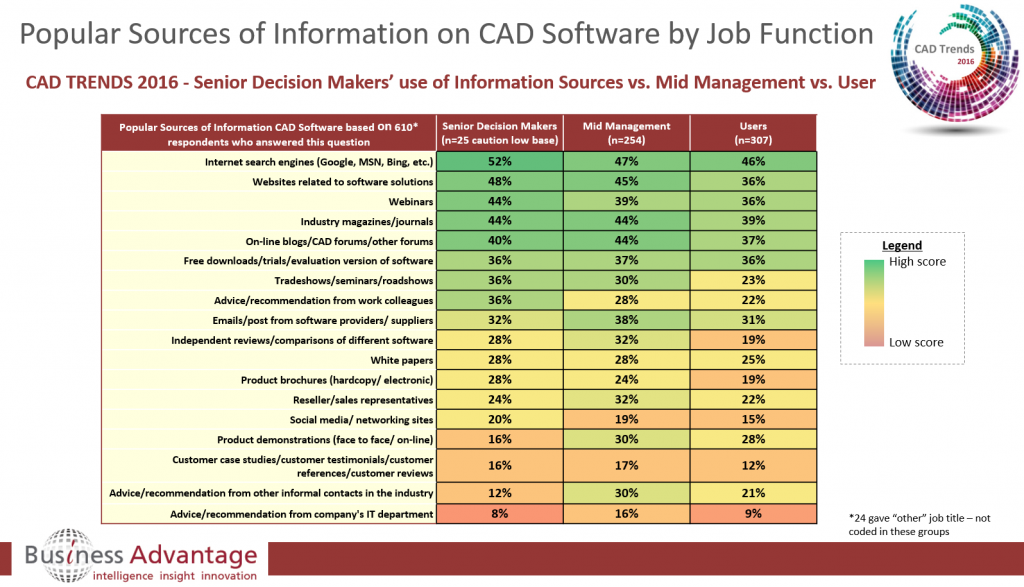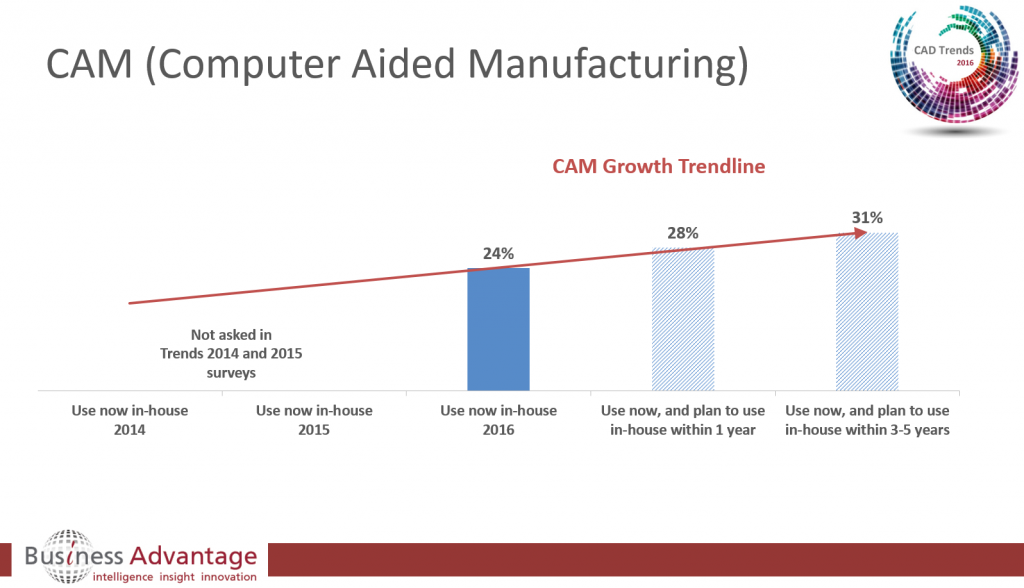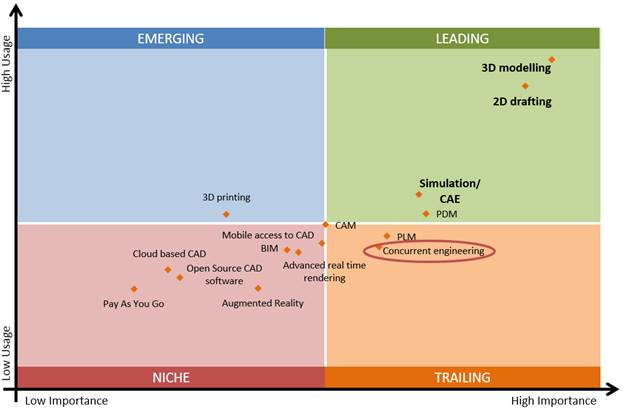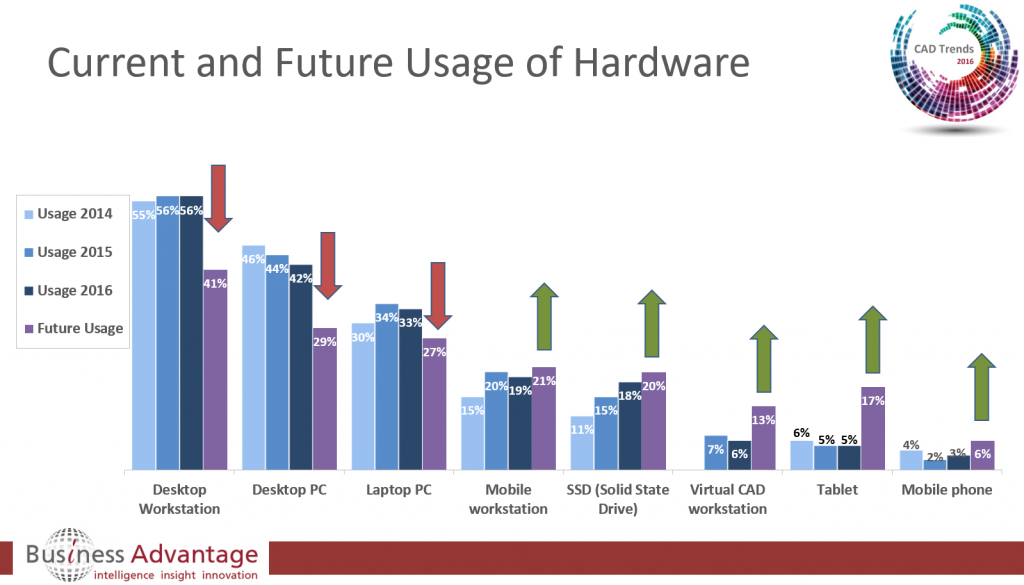We published the 2016 Worldwide CAD Trends Survey results last month and will publish more details specific to some of the most important trends in a series of blog posts over the next quarter.
Key Insight: This post focuses on the CAD Trends with the best future CAD growth potential over the next 5 years for software developers and their partners.
The CAD Trends which are currently the most important to users (3D Modelling, 2D Drafting) are reaching market saturation, as they have very high current usage and therefore relatively little scope to further expand their reach. So although current usage and perceived importance are still relatively low on what have been termed the more “niche” trends (see graph below), they are where the future growth lies.
The following graph presents the trends in the order of their growth potential ratio of the next 3-5 years.
Below are the top 6 trends in terms of growth potential although most are based on a low number of current users. In terms of category, one of them, 3D Printing, has already moved from the ‘niche’ to the ’emerging’ category.
- Pay As You Go – 240% (this encompasses various new CAD software business models including term rental and subscription licensing)
- Cloud based CAD – 164%
- Augmented/Virtual Reality – 140%
- Mobile access to CAD – 118%
- Advanced real time rendering – 88%
- 3D Printing – 75%
The following graph compares current usage with predicted additional usage in 1 year and in 3-5 years across all the CAD Trends researched. So here you can see that although Pay As You Go has high growth potential, in fact it has the lowest current usage.
Next steps?
- Watch this blog for regular updates with more detail on other CAD trends from the 2016 Worldwide CAD Trends Survey.
- Naturally the report is a high level summary of insights gained from the data gathered and this series of blog posts enables us to add further detail but if you are interested in still more detail, such as information on the CAD growth trends by region, industry or software vendor, give us a call to chat with a research executive about your needs.
- Watch the CAD Trends 2016 webinar and other recorded webinars here.
The post Best Future CAD Growth Opportunities appeared first on Business Advantage's Blog.
